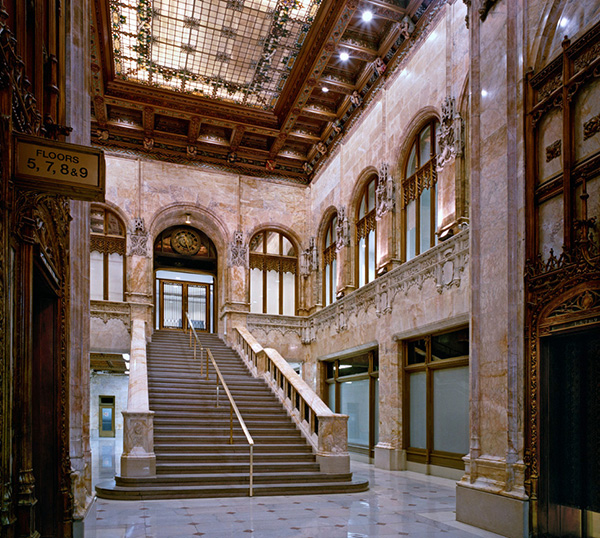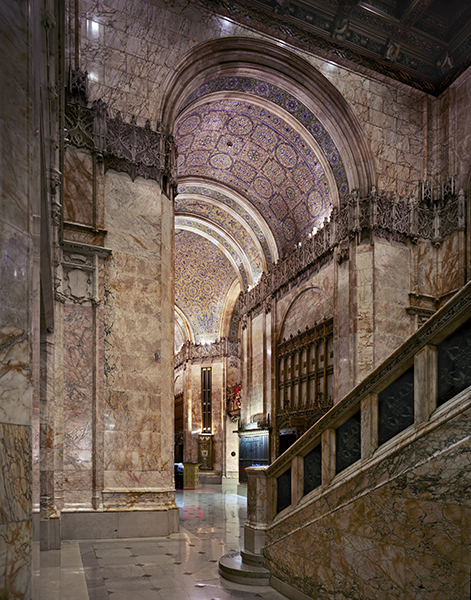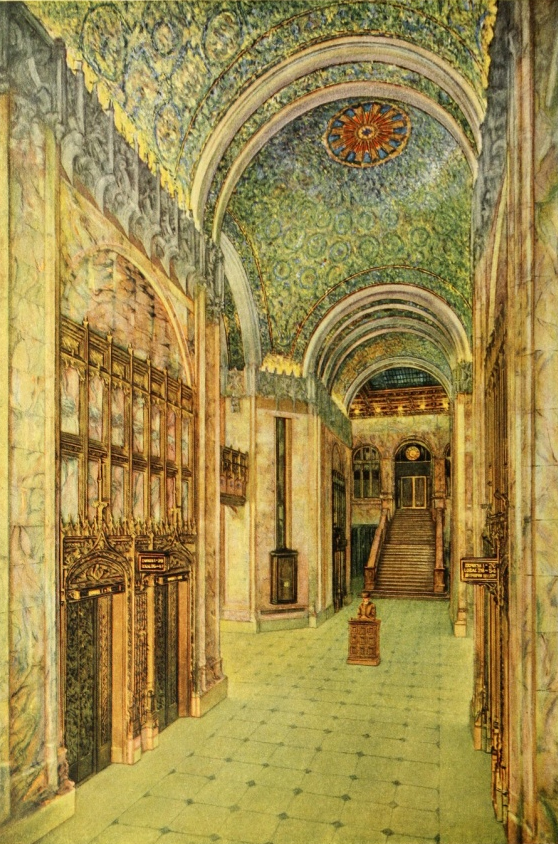The Skyscraper Museum is devoted to the study of high-rise building, past, present, and future. The Museum explores tall buildings as objects of design, products of technology, sites of construction, investments in real estate, and places of work and residence. This site will look better in a browser that supports web standards, but it is accessible to any browser or Internet device.
Lobby of the Woolworth
The Woolworth Building's opulent lobby had a main entrance on Broadway and nave-like side entrances from Barclay Street and Park Place that emphasized its cathedral-like effect. Behind the elevator banks was an arcade of shops and a grand staircase that led to the banking hall of the Irving National Bank. Beige marble walls and stairs topped with an elaborate coffered ceiling and stained glass skylight made the two-story space, a collaboration of Cass Gilbert and the ornamental artists Heinigke and Bowen, seem palatial in both scale and quality of materials.

Lobby of the Woolworth, Courtesy of John Bartelstone (c) 2012

Lobby of the Woolworth, Courtesy of John Bartelstone (c) 2012
The main lobby was more distinctly church-like, with round-arched vaults and colorful mosaics of blue, green, and gold, also designed by Heinigke and Bowen, inspired more by Early Christian or Byzantine models than by Gothic architecture. Woolworth's literature stated the mosaics suggested "a flood of dazzling jewels glittering in the sunlight…a riot of harmonies colors, all spread out in a golden setting, and arranged in exquisite design" --but the lobby is, in fact, windowless, and incandescent up-lighting increased the glittering effect.

Woolworth Building, lobby- arcade
by E.K. Carter, from the Cathedral of Commerce; Collection of the Skyscraper Museum
Stylistically, the lobby design was an eclectic mix: the ogee arches, decorative cornice, and delicate tracery around the elevator cabs, by Donnelly and Ricci, the same firm that modeled the terra cotta facade ornament, suggest the Gothic style, but the mix of mosaics, allegorical mural paintings in the "transept" mezzanines, and palatial splendor of the lobby-arcade, mark the architecture with a characteristic early 20th-century Beaux Arts sensibility.
